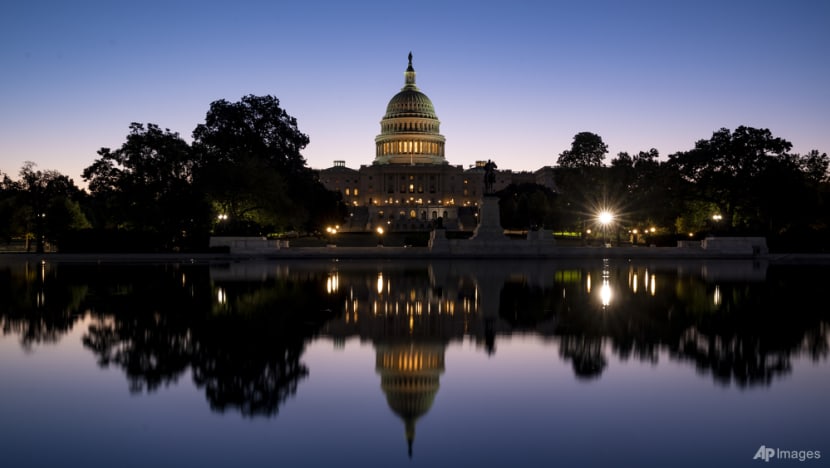Your questions answered on US government shutdown

The Capitol is seen at dawn as a consequential week begins in Washington for President Joe Biden and Democratic leaders in Congress who are trying to advance his $3.5 trillion "Build Back Better" and pass legislation to avoid a federal shutdown on Sep 27, 2021. (Photo: AP/J Scott Applewhite)
The US government is approaching yet another possible shutdown unless Congress enacts a stopgap spending bill that carries through the start of a new fiscal year on Oct 1.
Memories remain fresh of the longest shutdown in US history, lasting 35 days in late 2018 into early 2019, over President Donald Trump’s insistence on US$5.7 billion for a wall on the border with Mexico.
1. Why does the government shut down?
The US government runs on 12 appropriations Bills passed each year by Congress and signed by the president. In fiscal years like this one, when all 12 Bills are not adopted by the Oct 1 start of the fiscal year - the current count is zero, for those keeping score - Congress and the president keep the machinery of government humming by passing short-term extensions of current funding, known formally as continuing resolutions.
2. What does a shutdown mean?
It means many, though not all, federal government functions are suspended, and many, though not all, federal employees are furloughed.
Services that the government deems “essential”, such as those related to law enforcement and public safety, continue.
But defining “essential” is more art than science, with individual government departments - and the political appointees who run them - having a say over who comes to work and who stays home.
In theory at least, a federal employee who works during a shutdown, but is not supposed to, could face fines or a prison term under what’s called the Antideficiency Act.
3. What government services would cease?
The ones that draw headlines are those that produce closures of national park facilities and the Smithsonian museums in Washington and delays in processing applications for passports and visas.
Economic reports from the Labor and Commerce departments could be delayed, depending on how long a shutdown lasts.
Tax audits, oversight of financial swap markets and investigations of workplace civil-rights complaints are among activities expected to stop.
Related:
4. Which government functions would be unaffected?
Military operations, air traffic control, medical care of veterans and federal criminal investigations are among the essential activities that go on.
The US Postal Service and US Federal Reserve have their own funding streams so will also be largely unaffected.
5. What happens to my government cheque?
Entitlement programs such as Social Security and Medicare are considered mandatory spending, meaning they do not need annual appropriations to continue distributing money.
That does not mean such programs are guaranteed to be unaffected.
During a 1996 shutdown, even as Social Security cheques continued to go out, “staff who handled new enrollments and other services, such as changing addresses or handling requests for new Social Security cards, were initially furloughed”, according to the Committee for a Responsible Federal Budget.
And during the 2018-2019 shutdown, the Department of Agriculture had to rely on a special authority included in the previous continuing resolution to continue issuing food stamps.
6. How many times has this happened?
There have been 14 shutdowns since 1981, ranging in duration from a single day to the 35-day shutdown in 2018-2019. (Before 1981, agencies operated mostly as normal during funding gaps, their expenses covered retroactively once a deal was reached.)
Shutdowns over spending disagreements are different (and less grave) than what would happen if the US breached its debt ceiling and defaulted on some of its obligations. That has never happened but is once again a worry in Washington.












